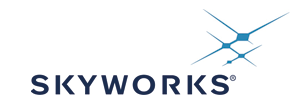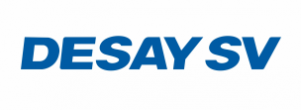DRM is greener, clearer, wider, bigger, better quality & audio content and cost efficient

Listeners
- Excellent quality sound in stereo, up to CD quality
- Data such as text, pictures and Journaline
- Easy tuning on stationname

Manufacturers
- Replace receivers with new digital receivers
- Increase the market potential
- Increase possibilities for new areas of interest and content

Broadcasters
- Multilingual programmes are possible plus extra information
- Reduced power consumption of up to 40-50%
- Increased opportunity for revenue generation streams

Regulators
- Uses less spectrum and releases spectrum for other use
- An international standard
- Low power cost-green broadcasting
- Emergency warning alert
Benefits of Digital AM For Listeners
More Choice
The average radio today can receive some 35-40 local FM stations and a handful of Medium Wave broadcasts. DRM has the potential to bring to every radio a vast selection of new content. New programmes from the world’s leading international broadcasters. Quality speech radio on Medium Wave, focusing on national and regional topics. And, a world of community radios keen to find a voice.
No Compromise In Sound Quality
The huge innovation that DRM brings is that Short Wave and Medium Wave broadcasts can now be heard in FM-like sound quality. And reception is excellent anywhere – in cities and in dense forests, indoors in a block of flats and outdoors while driving your car.
It Is Still A Radio …
… and not a computer. Which means that you don’t need an internet connection to listen nor a Wi-Fi spot to tune in. And because of this, it is truly portable and mobile. You can take a DRM radio anyplace and listen to what you want, when you want, where you want.
A Radio Without Boundaries
Because DRM is ideally suited to long range broadcasting, you can stay tuned to the same station as you cross regional and national boundaries and move from one country to the next. Imagine, for example, driving across Europe, for pleasure or as part of your job, and being able to stay tuned to your favourite radio station from back home – absolutely not other system can deliver that.
All The Benefits Of Digital Radio
A low cost DRM receiver will deliver all the benefits associated with modern digital radios. You have access to an Electronic Programme Guide (EPG) and you can tune in easily by frequency, station name or type of programme. In addition, the programmes come with associated text information – the name of the station, the title of the programme or record playing etc. And, as most DRM radios can also tune in to both the analogue FM and MW bands and DAB, where available, this will be the one device you will need to listen to all your favourite radio content.
Benefits Of Digital AM For Manufacturers
Receiver, Transmitter and Semiconductor Manufacturers
Potentially, A Vast New Market
In the world there are a few billion analogue AM and even more FM radio receivers. More and more such receivers are coming onto the market now. The production of DRM radio receivers for cars, desktops, tablets, laptops, and also for mobile phones can expand the markets further. The DRM digital radio standard is a strategic opportunity for manufacturers to increase their business and profits. The plans for adoption of DRM in very large countries India, Indonesia, Pakistan, Russia, China, South Africa to name only a few will increase trust among digital radio stakeholders that such projects are a reality.
A Proven Technology
The DRM technology has been demonstrated and continues across the globe, from the UK, to other European and Asian countries, to Brazil and the USA. The excellent results of the demonstrations have been made available and their success has been endorsed by the leading professional and scientific bodies in the industry, like ITU and ETSI.
An Open Standard
Unlike other digital technologies, DRM is an open, non-proprietary standard promoted by a not-for-profit Consortium. The associated Ips are independently administered by vialicensing.com. The IP is paid only once on the finished product by manufacturers. There are no other licences or fees to be paid by stakeholders or manufacturers.
A Complementary And Versatile Technology
DRM is fully compatible with the Eureka-147 standard. It is relatively straightforward and cost effective to integrate DRM capabilities into a wide variety of devices, using the latest SDR solutions – from standard radio sets with multi-band functionality, to tablets, mobile phones and cars, either incorporated in the device itself or via dongles.
Get Involved Now, Influence The Future
The DRM Consortium brings together some of the biggest names in the broadcasting industry (BBC, AIR, Dolby, Fraunhofer IIS, Nautel, Ampegon, Silabs, RFmondial, RRI and many others) Members have the opportunity to influence not just the technical improvements but also the the regulatory authorities as the technology is being brought to the market.
Benefits Of Digital AM For Broadcasters
For broadcasters of all kinds, DRM is a godsend.
Expand Your Reach
For major international broadcasters, like the BBC, it is the obvious replacement for traditional Short Wave transmissions. DRM allows direct access to millions of listeners in excellent sound quality, without the hindrance of having to negotiate a way past the gatekeepers and at an excellent cost/reach ratio.
For specialised international broadcasters – for example, religious broadcasters – DRM is, so to speak, an answer to a prayer. It allows them to reach the parts other systems cannot reach, for a fraction of the cost.
DRM on Medium Wave is perfect for broadcasters aiming for a national audience, especially in countries covering a sizeable geographical area. In France, where the regulatory authorities have already approved DRM as the digital successor to Medium Wave, two transmitters will cover the entire country. In large countries, like India, Indonesia, South Africa or Russia , DRM may be the only means to achieve seamless national coverage in the digital era – and it will certainly be the most cost efficient.
DRM is also the ideal solution for regional Medium Wave coverage, on its own or as a complementary system to DAB. And, of course, DRM is simply perfect for broadcasters planning to roll out new, additional digital services and generate new revenue streams without compromising their existing content offer.
But even for smaller broadcasters targeting well defined, urban niches, DRM has an answer. It is DRM in the VHF/FM bands which, subject to regulatory approvals, will allow community radios or specialised commercial broadcasters to reach their intended audiences bypassing the congestion and high costs of the analogue FM band.
DRM is a cost efficient solution all along the value chain.
A Cost Efficient Solution
Analogue Short and Medium Wave transmitters can be converted to DRM mode at low cost and the useful life of the equipment significantly prolonged, both from a technical and a financial point of view.
The scope of the capital investment required is also manageable because just a few transmitters can achieve excellent coverage over very extensive territories. Unlike other systems of digital audio broadcasting, DRM does not require a large network of transmitters or a complicated lattice of repeaters to do the job.
Transmission revenue costs are no higher to those of analogue Short and Medium Wave broadcasts and offer excellent value for money given the wide area coverage and the superior sound quality.
DRM has been developed to operate alongside other digital radio technologies and in the field of receivers there are already radio sets that are compatible not just with one technical standard but with integrated hybrid tests that work in the analogue bands and can also decode DAB/DAB+ signals. The integration of DRM capability into these hybrid chipsets can be achieved at marginal cost, adding very little to the cost of the radio to the consumer.
Plug Into The Digital Universe
While television is forging ahead with digital conversion and many countries have achieved it already, radio is entering the digital era at a much slower pace.
Radio does have a digital future, because of its immediacy and its portability and DRM will be an integral part of that future. For radio to move into the digital world in step with other platforms, sound needs to be in a format that these other platforms can understand – and the DRM standard provides that.
DRM also provides enhanced digital features such as on-screen SPIs, data streams and pause live radio and rewind functionality and it greatly facilitates interactivity with the audience.
Benefits For Regulators
DRM Is The Complete Digital Radio Solution
DRM is the complete, open and internationally recognised solution for digitising radio in all frequency bands. It uses less spectrum, which can be released for other use. Through DRM listeners can tune in on station name not frequency, can get multimedia content, audio and text information, as well as pictures. Radio receivers can automatically switch for emergency warnings in case of impending disasters. DRM ensures genuine green broadcasting through less power usage and therefore less costs.
An International Standard
Digital Radio (DRM) is the universal, openly standardised digital broadcasting system for all broadcasting frequencies below and above 30 MHz, including LW, MW, SW, band I, II (FM band) and band III. DRM has been successfully tested globally while larger countries such as India have already adopted DRM as their digital radio standard. DRM can be deployed on its own or as a complementary technology to plan a successful and flexible transition to digital radio.
Uses Less Spectrum And Releases Spectrum For Other Use
DRM is able to achieve real benefits in spectrum efficiency in all circumstances. This is through tailoring spectrum use to actual broadcast requirements. In the VHF band, DRM can be configured to use less spectrum than current stereo FM broadcasts (half of it, actually), whilst additionally deriving the potential benefits of increased robustness, reduced transmission power, increased coverage and additional services. DRM in AM bands can replace AM transmissions on the Short, Medium and Long wave bands. In this case there are no spectrum savings but the perceived quality on digital AM would be closer to that of FM broadcasting, thus making better use of the available spectrum. Equivalent coverage can be maintained with a significant power reduction.
Lower Power Costs – Green Broadcasting
DRM programmes on Short, Medium and Long wave for broadcasting bands up to 30MHz (‘DRM in AM’) cover large geographical areas with much lower power consumption. DRM in the VHF bands (above 30 MHz) uses the existent infrastructure and maintains the coverage area at slightly reduced energy costs but with more content capacity.
Emergency Warning Alerts
Due to the unique feature of DRM as an all-frequency-bands standard, the Emergency Warning in-built feature is suitable for governments of large countries, where disasters may occur frequently. The DRM system sends an alert signal to receivers that in turn switch automatically to emergency channels. DRM enables the delivery of emergency and alert programmes containing both audio and text in several languages simultaneously. This provides essential and real time information and advice to the population, thus fulfilling one of the major roles of governments across the world. DRM is the only digital radio system that triggers automatic switch to the emergency warning channel, even when the receiver is in stand-by.
To download the DRM Handbook please copy this information into your browser: handbook.drm.radio

















